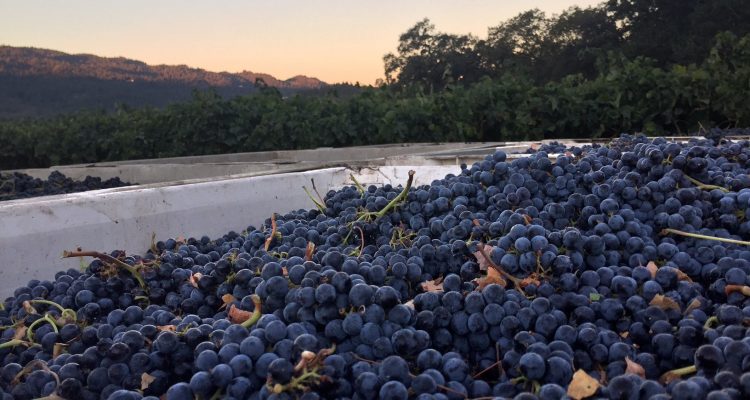Are we underestimating Merlot?
While most people in the wine trade recognize Merlot is making a comeback in the U.S. after its numbers slipped in the wake of Sideways, perhaps there is something much bigger is happening. What if Merlot is really in the middle of a run to replace Cabernet Sauvignon as the dominant red wine grape in the world?
Sound preposterous?
Perhaps, but I think we might have been ignoring clues about Merlot’s growing strength as a grape – and wine – of choice, primarily because many people in the trade still enjoy beating on Merlot the way they love beating on Chardonnay in spite of the fact that the latter is the world’s most-popular white variety. Merlot is not exotic enough, they complain, it grows too well in too many places, it gets ripe too easily, it can easily be made into pleasant everyday wine as well as into some of the greatest red wines in the world. What’s not to hate?
While I may be overstating the case for Merlot über alles, here are some reasons to believe the times they are a-changin’:
- American drinkers under 30 could care less about the Curse of Sideways These drinkers were either teenagers or toddlers when the film came out in 2004, 13 years or half a lifetime ago. And they could give a crap what messed-up Miles smugly thinks about Merlot or about the effect the movie had on consumption patterns of their parents.

- Merlot has become the preferred red varietal for the Millennials – not Cabernet Sauvignon, not Malbec, not Pinot Noir. You can look it up. According to the 2016 Wine Intelligence Report, when Millennials were asked which varietals they had consumed during the past six months, 53% said Merlot, 43% said Cabernet, 42% Pinot Noir, 36% Zinfandel.
- Merlot, not Cabernet Sauvignon, is the most–planted grape in Bordeaux. We like to think of Cabernet as being the great grape of Bordeaux with everything else being secondary. But according to the CIVB – the Bordeaux Wine Council – 58% of red grapes grown in Bordeaux are Merlot, and only 20% are Cabernet Sauvignon.
- That includes the Left Bank. Although the Cabernet Sauvignon acreage on the Right Bank constitutes a higher percentage than that planted in Bordeaux as a whole, it still trails Merlot in the Medoc and Graves – 45% of acreage to Merlot’s 49%. That said, we cannot ignore the fact that the top Left Bank growths are still Cab-dominated blends, and that is not likely to change anytime soon. In fact, Cab’s dominance with the Bordeaux’ crus and in Napa Valley is the primary reason why it is considered to be invulnerable. But many châteaux on the Left Bank are already Merlot dominant, and that trend is likely to continue.
- Worldwide, Merlot trails only Cab Sauv as the most–planted red variety. According to a 2014 study by the University of Adelaide, Cabernet Sauvignon is the #1 grape with about 290,000 hectares planted, while Merlot barely trails with 267,000 hectares, or eight per cent less. (This was the first time the study was done, so no trending up or down could be indicated.)
- East Coast wines have taken off like rockets in both quantity and quality, and Merlot is the red grape of choice. In spite of global warming, many growers from Virginia to New York’s Long Island grow Merlot rather than Cab because it ripens fully, and Cabernet Sauvignon still doesn’t in most places.
- Winegrowers love the fact that Merlot is almost hassle-free. It ripens early, is productive and is not especially prone to disease. If that bothers anyone, they can always work away their guilt by thinning crop.
- Those who are cheering on Merlot have plenty of inspirational benchmarks. Petrus, Masseto, Le Pin, Duckhorn, Vieux Château Certan, Vérité immediately come to mind.
- Merlot, which plays nice with most other varietals, is helping lead the blended red trend, especially in California, where it pairs up especially well with Syrah.
Not that I don’t love Cab. Subjectively, I grew up drinking everyday Bordeaux in the 1970’s, a time when ripeness was still a problem, and thus I developed a taste for those cherry-stem flavors that most consider a winemaking flaw. And Cab is still my go-to wine when I want something lean to pair with bloody meat.
But, objectively, just as water seeks its own level, so does wine. And I think Merlot is coming close to overflowing the glass.


